Abstract:
In this paper, we present the development of submillimeter-wave monolithic integrated circuits (S-MMICs) and modules for use in next-generation sensors and high-data-rate...Show MoreMetadata
Abstract:
In this paper, we present the development of submillimeter-wave monolithic integrated circuits (S-MMICs) and modules for use in next-generation sensors and high-data-rate wireless communication systems, operating in the 300-500-GHz frequency regime. A four-stage 460-GHz amplifier MMIC and a 440-GHz class-B frequency doubler circuit have been successfully realized using our 35-nm InAlAs/InGaAs-based metamorphic high-electron mobility transistor (mHEMT) technology in combination with grounded coplanar circuit topology (GCPW). Additionally, a 500-GHz amplifier MMIC was fabricated using a more advanced 20-nm mHEMT technology. To package the submillimeter-wave circuits, a set of waveguide-to-microstrip transitions has been fabricated on both 50-μm-thick quartz and GaAs substrates, covering the frequency range between 220 and 500 GHz. The E-plane probes were integrated in a four-stage 20-nm cascode amplifier circuit to realize a full H -band (220 to 325 GHz) S-MMIC amplifier module with monolithically integrated waveguide transitions.
Published in: IEEE Journal of Solid-State Circuits ( Volume: 46, Issue: 10, October 2011)

Fraunhofer Institute for Applied Solid State Physics (IAF), Freiburg, Germany
Axel Tessmann received the Dipl.-Ing. degree from the University of Karlsruhe, Karlsruhe, Germany, in 1997, and the Ph.D. degree from the University of Karlsruhe, Germany, in 2006, both in electrical engineering.
In 1997, he joined the High Frequency Devices and Circuits Department, Fraunhofer Institute for Applied Solid State Physics (IAF), Freiburg, Germany, where he is involved in the development of monolithically integ...Show More
Axel Tessmann received the Dipl.-Ing. degree from the University of Karlsruhe, Karlsruhe, Germany, in 1997, and the Ph.D. degree from the University of Karlsruhe, Germany, in 2006, both in electrical engineering.
In 1997, he joined the High Frequency Devices and Circuits Department, Fraunhofer Institute for Applied Solid State Physics (IAF), Freiburg, Germany, where he is involved in the development of monolithically integ...View more

Fraunhofer Institute for Applied Solid State Physics (IAF), Freiburg, Germany
Arnulf Leuther received the Dipl. Phys. degree and Ph.D. degree in physics from the Technical University of Aachen, Aachen, Germany.
He has been with the Fraunhofer Institute for Applied Solid State Physics (IAF), Freiburg, Germany, since 1996. His current focus is the development of HEMT technologies for sensor and communication systems up to 600 GHz.
Arnulf Leuther received the Dipl. Phys. degree and Ph.D. degree in physics from the Technical University of Aachen, Aachen, Germany.
He has been with the Fraunhofer Institute for Applied Solid State Physics (IAF), Freiburg, Germany, since 1996. His current focus is the development of HEMT technologies for sensor and communication systems up to 600 GHz.View more
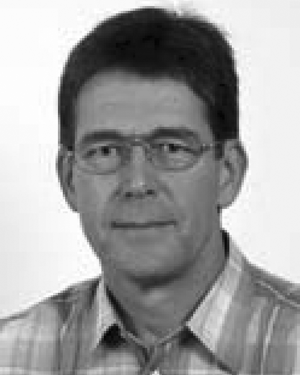
Fraunhofer Institute for Applied Solid State Physics (IAF), Freiburg, Germany
Volker Hurm was born in Schwäbisch Gmünd, Germany, in 1953. He received the Diploma degree in physics from the University of Tübingen, Tübingen, Germany, in 1979, and the Ph.D. degree from the University of Freiburg, Frieburg, Germany, in 1983.
In 1979, he joined the Fraunhofer Institute for Applied Solid State Physics (IAF), Freiburg, Germany, where he worked initially on the modelling and characterization of silicon devi...Show More
Volker Hurm was born in Schwäbisch Gmünd, Germany, in 1953. He received the Diploma degree in physics from the University of Tübingen, Tübingen, Germany, in 1979, and the Ph.D. degree from the University of Freiburg, Frieburg, Germany, in 1983.
In 1979, he joined the Fraunhofer Institute for Applied Solid State Physics (IAF), Freiburg, Germany, where he worked initially on the modelling and characterization of silicon devi...View more
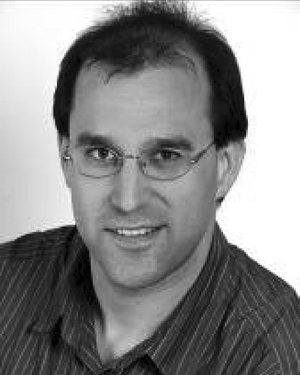
Fraunhofer Institute for Applied Solid State Physics (IAF), Freiburg, Germany
Ingmar Kallfass received the Dipl.-Ing. degree in electrical engineering from University of Stuttgart, Stuttgart, Germany, in 2000, and the Dr.-Ing. degree from the University of Ulm, Ulm, Germany, in 2005.
In 2001, he was a Visiting Researcher with the National University of Ireland, Dublin. In 2002, he joined the Department of Electron Devices and Circuits of the University of Ulm as a Teaching and Research Assistant. In...Show More
Ingmar Kallfass received the Dipl.-Ing. degree in electrical engineering from University of Stuttgart, Stuttgart, Germany, in 2000, and the Dr.-Ing. degree from the University of Ulm, Ulm, Germany, in 2005.
In 2001, he was a Visiting Researcher with the National University of Ireland, Dublin. In 2002, he joined the Department of Electron Devices and Circuits of the University of Ulm as a Teaching and Research Assistant. In...View more

Fraunhofer Institute for Applied Solid State Physics (IAF), Freiburg, Germany
Hermann Massler was born in Radolfzell, Germany, in 1965. He received the Dipl.-Ing degree in electrical engineering from the University of Karlsruhe, Karlsruhe, Germany, in 1993.
While working on his diploma degree at the Kernforschungszentrum Karlsruhe (KfK), he did quasi-optical measurements at 140 GHz. He continued these studies as a Research Assistant with the KfK for another year. Since 1994, he has been with the Fra...Show More
Hermann Massler was born in Radolfzell, Germany, in 1965. He received the Dipl.-Ing degree in electrical engineering from the University of Karlsruhe, Karlsruhe, Germany, in 1993.
While working on his diploma degree at the Kernforschungszentrum Karlsruhe (KfK), he did quasi-optical measurements at 140 GHz. He continued these studies as a Research Assistant with the KfK for another year. Since 1994, he has been with the Fra...View more

Fraunhofer Institute for Applied Solid State Physics (IAF), Freiburg, Germany
Michael Kuri was born in Freiburg, Germany, in 1971. He received the Diploma degree in electrical engineering from the University of Furtwangen, Furtwangen, Germany, in 1996.
From 1996 to 2000, he was with Storz, Kenzingen, Germany, where he was engaged in the design and routing of high-speed and high-frequency digital and analog circuits. In 2000, he joined the High Frequency Devices and Circuits Department, Fraunhofer In...Show More
Michael Kuri was born in Freiburg, Germany, in 1971. He received the Diploma degree in electrical engineering from the University of Furtwangen, Furtwangen, Germany, in 1996.
From 1996 to 2000, he was with Storz, Kenzingen, Germany, where he was engaged in the design and routing of high-speed and high-frequency digital and analog circuits. In 2000, he joined the High Frequency Devices and Circuits Department, Fraunhofer In...View more
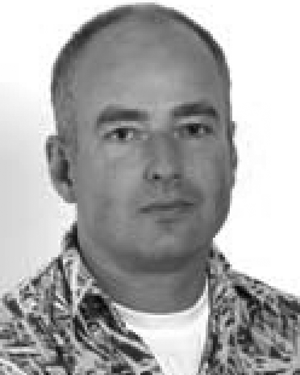
Fraunhofer Institute for Applied Solid State Physics (IAF), Freiburg, Germany
Markus Riessle was born in Freiburg, Germany, in 1962. He received the certified engineer degree in mechanical engineering from the Gewerbeschule Freiburg, Germany, in 1994.
From 1995 to 1999, he was with Raymond, Weil, Germany, where he was engaged in the design and layout of injection molding components for the automotive industry. In 2000, he joined the High Frequency Devices and Circuits Department, Fraunhofer Institut...Show More
Markus Riessle was born in Freiburg, Germany, in 1962. He received the certified engineer degree in mechanical engineering from the Gewerbeschule Freiburg, Germany, in 1994.
From 1995 to 1999, he was with Raymond, Weil, Germany, where he was engaged in the design and layout of injection molding components for the automotive industry. In 2000, he joined the High Frequency Devices and Circuits Department, Fraunhofer Institut...View more
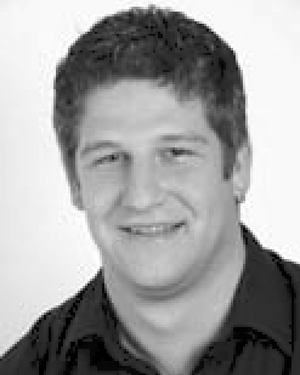
Fraunhofer Institute for Applied Solid State Physics (IAF), Freiburg, Germany
Martin Zink was born in Freiburg, Germany, in 1981. He received the certified Engineer degree in mechanical engineering from the Deutsche Angestellten-Akademie, Essen, Germany, in 2010.
In 1999, he joined the Fraunhofer Institute for Applied Solid State Physics (IAF), Freiburg, Germany, where he is involved in the computer-aided design and the microassembly of MMIC modules from 100MHz to 500 GHz.
Martin Zink was born in Freiburg, Germany, in 1981. He received the certified Engineer degree in mechanical engineering from the Deutsche Angestellten-Akademie, Essen, Germany, in 2010.
In 1999, he joined the Fraunhofer Institute for Applied Solid State Physics (IAF), Freiburg, Germany, where he is involved in the computer-aided design and the microassembly of MMIC modules from 100MHz to 500 GHz.View more
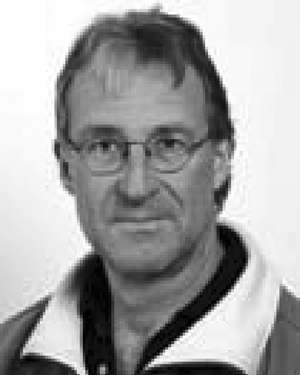
Fraunhofer Institute for Applied Solid State Physics (IAF), Freiburg, Germany
Rainer Loesch received the certified Engineering degree in physics from the Physics Engineering School Stuttgart, Stuttgart, Germany, in 1981.
In 1984, he joined the German Telekom Research Institute, FTZ, Darmstadt, Germany, where he was involved with III/V compound semiconductor vapor-phase and molecular-beam epitaxy with regard to telecommunication lasers. Since 1996, he has been with the Epitaxy Department, Fraunhofer ...Show More
Rainer Loesch received the certified Engineering degree in physics from the Physics Engineering School Stuttgart, Stuttgart, Germany, in 1981.
In 1984, he joined the German Telekom Research Institute, FTZ, Darmstadt, Germany, where he was involved with III/V compound semiconductor vapor-phase and molecular-beam epitaxy with regard to telecommunication lasers. Since 1996, he has been with the Epitaxy Department, Fraunhofer ...View more

Fraunhofer Institute for Applied Solid State Physics (IAF), Freiburg, Germany
Matthias Seelmann-Eggebert received the Diploma and Ph.D. degree in physics from the University of Tübingen, Tübingen, Germany, in 1980 and 1986, respectively.
From 1980 to 1996, he was involved in research and development related to infrared detectors based on HgCdTe and applied research in the field of electrochemistry and surface physics. From 1990 to 1991, he was a Visiting Scientist with Stanford University, Stanford,...Show More
Matthias Seelmann-Eggebert received the Diploma and Ph.D. degree in physics from the University of Tübingen, Tübingen, Germany, in 1980 and 1986, respectively.
From 1980 to 1996, he was involved in research and development related to infrared detectors based on HgCdTe and applied research in the field of electrochemistry and surface physics. From 1990 to 1991, he was a Visiting Scientist with Stanford University, Stanford,...View more
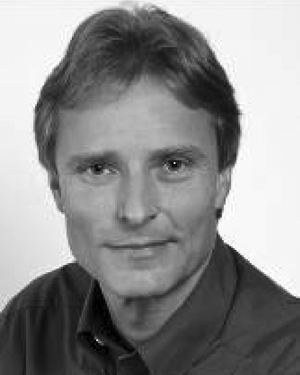
Fraunhofer Institute for Applied Solid State Physics (IAF), Freiburg, Germany
Michael Schlechtweg received the Dipl.-Ing. degree in electrical engineering from the Technical University Darmstadt, Darmstadt, Germany, in 1982, and the Dr.-Ing. degree from the University of Kassel, Kassel, Germany, in 1989.
He joined the Fraunhofer Institute for Applied Solid State Physics (IAF), Freiburg, Germany, where he was involved with the design of millimeter-wave integrated circuits and nonlinear characterizati...Show More
Michael Schlechtweg received the Dipl.-Ing. degree in electrical engineering from the Technical University Darmstadt, Darmstadt, Germany, in 1982, and the Dr.-Ing. degree from the University of Kassel, Kassel, Germany, in 1989.
He joined the Fraunhofer Institute for Applied Solid State Physics (IAF), Freiburg, Germany, where he was involved with the design of millimeter-wave integrated circuits and nonlinear characterizati...View more
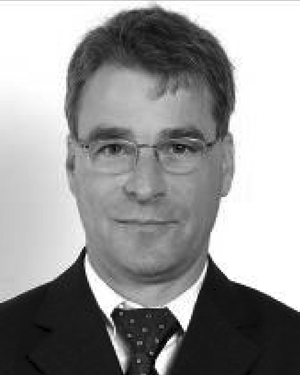
Fraunhofer Institute for Applied Solid State Physics (IAF), Freiburg, Germany
Oliver Ambacher received the Dipl.-Phys. and Dr. degrees (with honors) from the Ludwig-Maximilians and Technical University Munich, Munich, Germany, in 1989 and 1993, respectively.
In 1993, he joined the Walter Schottky Institute, Technical University Munch, to investigate the epitaxial growth of group-III nitrides-based heterostructures. Since 1995, the research of his group has focused on fabrication of GaN-based devices...Show More
Oliver Ambacher received the Dipl.-Phys. and Dr. degrees (with honors) from the Ludwig-Maximilians and Technical University Munich, Munich, Germany, in 1989 and 1993, respectively.
In 1993, he joined the Walter Schottky Institute, Technical University Munch, to investigate the epitaxial growth of group-III nitrides-based heterostructures. Since 1995, the research of his group has focused on fabrication of GaN-based devices...View more

Fraunhofer Institute for Applied Solid State Physics (IAF), Freiburg, Germany
Axel Tessmann received the Dipl.-Ing. degree from the University of Karlsruhe, Karlsruhe, Germany, in 1997, and the Ph.D. degree from the University of Karlsruhe, Germany, in 2006, both in electrical engineering.
In 1997, he joined the High Frequency Devices and Circuits Department, Fraunhofer Institute for Applied Solid State Physics (IAF), Freiburg, Germany, where he is involved in the development of monolithically integrated circuits and subsystems for high-resolution imaging systems. His main research areas are the design and packaging of millimeter-wave and submillimeter-wave ICs using high electron mobility transistors on GaAs, GaN and InP as well as circuit simulation and linear and nonlinear device modeling. He is currently Group Leader of the millimeter-wave packaging and subsystem group at the Fraunhofer IAF.
Axel Tessmann received the Dipl.-Ing. degree from the University of Karlsruhe, Karlsruhe, Germany, in 1997, and the Ph.D. degree from the University of Karlsruhe, Germany, in 2006, both in electrical engineering.
In 1997, he joined the High Frequency Devices and Circuits Department, Fraunhofer Institute for Applied Solid State Physics (IAF), Freiburg, Germany, where he is involved in the development of monolithically integrated circuits and subsystems for high-resolution imaging systems. His main research areas are the design and packaging of millimeter-wave and submillimeter-wave ICs using high electron mobility transistors on GaAs, GaN and InP as well as circuit simulation and linear and nonlinear device modeling. He is currently Group Leader of the millimeter-wave packaging and subsystem group at the Fraunhofer IAF.View more

Fraunhofer Institute for Applied Solid State Physics (IAF), Freiburg, Germany
Arnulf Leuther received the Dipl. Phys. degree and Ph.D. degree in physics from the Technical University of Aachen, Aachen, Germany.
He has been with the Fraunhofer Institute for Applied Solid State Physics (IAF), Freiburg, Germany, since 1996. His current focus is the development of HEMT technologies for sensor and communication systems up to 600 GHz.
Arnulf Leuther received the Dipl. Phys. degree and Ph.D. degree in physics from the Technical University of Aachen, Aachen, Germany.
He has been with the Fraunhofer Institute for Applied Solid State Physics (IAF), Freiburg, Germany, since 1996. His current focus is the development of HEMT technologies for sensor and communication systems up to 600 GHz.View more

Fraunhofer Institute for Applied Solid State Physics (IAF), Freiburg, Germany
Volker Hurm was born in Schwäbisch Gmünd, Germany, in 1953. He received the Diploma degree in physics from the University of Tübingen, Tübingen, Germany, in 1979, and the Ph.D. degree from the University of Freiburg, Frieburg, Germany, in 1983.
In 1979, he joined the Fraunhofer Institute for Applied Solid State Physics (IAF), Freiburg, Germany, where he worked initially on the modelling and characterization of silicon devices. Then he was engaged in the research and development of II/VI materials, the management of CAD systems, the development of monolithic and hybrid integrated photoreceivers for up to 80-Gb/s digital transmission systems, the design of 200-GHz GaAs Schottky diode frequency doublers, and the packaging of distributed amplifiers for 100-Gb/s modulator driver operation. He is currently with the High Frequency Devices and Circuits Department, IAF, as a Member of the Scientific Staff, where he is engaged in the development of submillimeter-wave couplers, filters and transitions up to 750GHz.
Volker Hurm was born in Schwäbisch Gmünd, Germany, in 1953. He received the Diploma degree in physics from the University of Tübingen, Tübingen, Germany, in 1979, and the Ph.D. degree from the University of Freiburg, Frieburg, Germany, in 1983.
In 1979, he joined the Fraunhofer Institute for Applied Solid State Physics (IAF), Freiburg, Germany, where he worked initially on the modelling and characterization of silicon devices. Then he was engaged in the research and development of II/VI materials, the management of CAD systems, the development of monolithic and hybrid integrated photoreceivers for up to 80-Gb/s digital transmission systems, the design of 200-GHz GaAs Schottky diode frequency doublers, and the packaging of distributed amplifiers for 100-Gb/s modulator driver operation. He is currently with the High Frequency Devices and Circuits Department, IAF, as a Member of the Scientific Staff, where he is engaged in the development of submillimeter-wave couplers, filters and transitions up to 750GHz.View more

Fraunhofer Institute for Applied Solid State Physics (IAF), Freiburg, Germany
Ingmar Kallfass received the Dipl.-Ing. degree in electrical engineering from University of Stuttgart, Stuttgart, Germany, in 2000, and the Dr.-Ing. degree from the University of Ulm, Ulm, Germany, in 2005.
In 2001, he was a Visiting Researcher with the National University of Ireland, Dublin. In 2002, he joined the Department of Electron Devices and Circuits of the University of Ulm as a Teaching and Research Assistant. In 2005, he joined the Fraunhofer Institute for Applied Solid State Physics (IAF), Freiburg, Germany, with a focus on nonlinear millimeter-wave integrated circuit design. Since June 2009, he has been a Professor with the Karlsruhe Institute of Technology, Karlsruhe, Germany, involved in the field of high-speed integrated circuits.
Ingmar Kallfass received the Dipl.-Ing. degree in electrical engineering from University of Stuttgart, Stuttgart, Germany, in 2000, and the Dr.-Ing. degree from the University of Ulm, Ulm, Germany, in 2005.
In 2001, he was a Visiting Researcher with the National University of Ireland, Dublin. In 2002, he joined the Department of Electron Devices and Circuits of the University of Ulm as a Teaching and Research Assistant. In 2005, he joined the Fraunhofer Institute for Applied Solid State Physics (IAF), Freiburg, Germany, with a focus on nonlinear millimeter-wave integrated circuit design. Since June 2009, he has been a Professor with the Karlsruhe Institute of Technology, Karlsruhe, Germany, involved in the field of high-speed integrated circuits.View more

Fraunhofer Institute for Applied Solid State Physics (IAF), Freiburg, Germany
Hermann Massler was born in Radolfzell, Germany, in 1965. He received the Dipl.-Ing degree in electrical engineering from the University of Karlsruhe, Karlsruhe, Germany, in 1993.
While working on his diploma degree at the Kernforschungszentrum Karlsruhe (KfK), he did quasi-optical measurements at 140 GHz. He continued these studies as a Research Assistant with the KfK for another year. Since 1994, he has been with the Fraunhofer Institute for Applied Solid State Physics (IAF), Freiburg, Germany, working on transistor- and IC-characterization up to 500 GHz.
Hermann Massler was born in Radolfzell, Germany, in 1965. He received the Dipl.-Ing degree in electrical engineering from the University of Karlsruhe, Karlsruhe, Germany, in 1993.
While working on his diploma degree at the Kernforschungszentrum Karlsruhe (KfK), he did quasi-optical measurements at 140 GHz. He continued these studies as a Research Assistant with the KfK for another year. Since 1994, he has been with the Fraunhofer Institute for Applied Solid State Physics (IAF), Freiburg, Germany, working on transistor- and IC-characterization up to 500 GHz.View more

Fraunhofer Institute for Applied Solid State Physics (IAF), Freiburg, Germany
Michael Kuri was born in Freiburg, Germany, in 1971. He received the Diploma degree in electrical engineering from the University of Furtwangen, Furtwangen, Germany, in 1996.
From 1996 to 2000, he was with Storz, Kenzingen, Germany, where he was engaged in the design and routing of high-speed and high-frequency digital and analog circuits. In 2000, he joined the High Frequency Devices and Circuits Department, Fraunhofer Institute for Applied Solid State Physics (IAF), Freiburg, Germany, where he is involved in the design, measurement and packaging of analog and digital ICs.
Michael Kuri was born in Freiburg, Germany, in 1971. He received the Diploma degree in electrical engineering from the University of Furtwangen, Furtwangen, Germany, in 1996.
From 1996 to 2000, he was with Storz, Kenzingen, Germany, where he was engaged in the design and routing of high-speed and high-frequency digital and analog circuits. In 2000, he joined the High Frequency Devices and Circuits Department, Fraunhofer Institute for Applied Solid State Physics (IAF), Freiburg, Germany, where he is involved in the design, measurement and packaging of analog and digital ICs.View more

Fraunhofer Institute for Applied Solid State Physics (IAF), Freiburg, Germany
Markus Riessle was born in Freiburg, Germany, in 1962. He received the certified engineer degree in mechanical engineering from the Gewerbeschule Freiburg, Germany, in 1994.
From 1995 to 1999, he was with Raymond, Weil, Germany, where he was engaged in the design and layout of injection molding components for the automotive industry. In 2000, he joined the High Frequency Devices and Circuits Department, Fraunhofer Institute for Applied Solid State Physics (IAF), Freiburg, Germany, where he is involved in the packaging of millimeter-wave and submillimeter-wave modules and subsystems.
Markus Riessle was born in Freiburg, Germany, in 1962. He received the certified engineer degree in mechanical engineering from the Gewerbeschule Freiburg, Germany, in 1994.
From 1995 to 1999, he was with Raymond, Weil, Germany, where he was engaged in the design and layout of injection molding components for the automotive industry. In 2000, he joined the High Frequency Devices and Circuits Department, Fraunhofer Institute for Applied Solid State Physics (IAF), Freiburg, Germany, where he is involved in the packaging of millimeter-wave and submillimeter-wave modules and subsystems.View more

Fraunhofer Institute for Applied Solid State Physics (IAF), Freiburg, Germany
Martin Zink was born in Freiburg, Germany, in 1981. He received the certified Engineer degree in mechanical engineering from the Deutsche Angestellten-Akademie, Essen, Germany, in 2010.
In 1999, he joined the Fraunhofer Institute for Applied Solid State Physics (IAF), Freiburg, Germany, where he is involved in the computer-aided design and the microassembly of MMIC modules from 100MHz to 500 GHz.
Martin Zink was born in Freiburg, Germany, in 1981. He received the certified Engineer degree in mechanical engineering from the Deutsche Angestellten-Akademie, Essen, Germany, in 2010.
In 1999, he joined the Fraunhofer Institute for Applied Solid State Physics (IAF), Freiburg, Germany, where he is involved in the computer-aided design and the microassembly of MMIC modules from 100MHz to 500 GHz.View more

Fraunhofer Institute for Applied Solid State Physics (IAF), Freiburg, Germany
Rainer Loesch received the certified Engineering degree in physics from the Physics Engineering School Stuttgart, Stuttgart, Germany, in 1981.
In 1984, he joined the German Telekom Research Institute, FTZ, Darmstadt, Germany, where he was involved with III/V compound semiconductor vapor-phase and molecular-beam epitaxy with regard to telecommunication lasers. Since 1996, he has been with the Epitaxy Department, Fraunhofer Institute for Applied Solid State Physics (IAF), Freiburg, Germany, where he is engaged in the molecular beam epitaxial development and growth of numerous structures on GaAs, InP, and GaSb substrates.
Rainer Loesch received the certified Engineering degree in physics from the Physics Engineering School Stuttgart, Stuttgart, Germany, in 1981.
In 1984, he joined the German Telekom Research Institute, FTZ, Darmstadt, Germany, where he was involved with III/V compound semiconductor vapor-phase and molecular-beam epitaxy with regard to telecommunication lasers. Since 1996, he has been with the Epitaxy Department, Fraunhofer Institute for Applied Solid State Physics (IAF), Freiburg, Germany, where he is engaged in the molecular beam epitaxial development and growth of numerous structures on GaAs, InP, and GaSb substrates.View more

Fraunhofer Institute for Applied Solid State Physics (IAF), Freiburg, Germany
Matthias Seelmann-Eggebert received the Diploma and Ph.D. degree in physics from the University of Tübingen, Tübingen, Germany, in 1980 and 1986, respectively.
From 1980 to 1996, he was involved in research and development related to infrared detectors based on HgCdTe and applied research in the field of electrochemistry and surface physics. From 1990 to 1991, he was a Visiting Scientist with Stanford University, Stanford, CA. From 1997 to 2000, he was engaged in the growth of CVD diamond. Since 2001, he has been a member of the High Frequency Devices and Circuits Department, Fraunhofer Institute for Applied Solid State Physics (IAF) in Freiburg, Germany, where he is in charge of the development of linear and nonlinear compact models for III-V devices.
Matthias Seelmann-Eggebert received the Diploma and Ph.D. degree in physics from the University of Tübingen, Tübingen, Germany, in 1980 and 1986, respectively.
From 1980 to 1996, he was involved in research and development related to infrared detectors based on HgCdTe and applied research in the field of electrochemistry and surface physics. From 1990 to 1991, he was a Visiting Scientist with Stanford University, Stanford, CA. From 1997 to 2000, he was engaged in the growth of CVD diamond. Since 2001, he has been a member of the High Frequency Devices and Circuits Department, Fraunhofer Institute for Applied Solid State Physics (IAF) in Freiburg, Germany, where he is in charge of the development of linear and nonlinear compact models for III-V devices.View more

Fraunhofer Institute for Applied Solid State Physics (IAF), Freiburg, Germany
Michael Schlechtweg received the Dipl.-Ing. degree in electrical engineering from the Technical University Darmstadt, Darmstadt, Germany, in 1982, and the Dr.-Ing. degree from the University of Kassel, Kassel, Germany, in 1989.
He joined the Fraunhofer Institute for Applied Solid State Physics (IAF), Freiburg, Germany, where he was involved with the design of millimeter-wave integrated circuits and nonlinear characterization and modeling of active RF devices. In 1994, he became head of the simulation and modeling group at Fraunhofer IAF. Since 1996, he has led the High Frequency Devices and Circuits Department, focusing on the design and the characterization of devices and integrated circuits based on III-V compound semiconductors for RF applications, as well as the development of integrated circuits and modules for sensor and communication systems up to 500 GHz and above. He has coauthored approximately 200 scientific publications and holds two patents.
Dr. Schlechtweg received the Fraunhofer Prize in 1993, and the European Microwave Prize in 1998.
Michael Schlechtweg received the Dipl.-Ing. degree in electrical engineering from the Technical University Darmstadt, Darmstadt, Germany, in 1982, and the Dr.-Ing. degree from the University of Kassel, Kassel, Germany, in 1989.
He joined the Fraunhofer Institute for Applied Solid State Physics (IAF), Freiburg, Germany, where he was involved with the design of millimeter-wave integrated circuits and nonlinear characterization and modeling of active RF devices. In 1994, he became head of the simulation and modeling group at Fraunhofer IAF. Since 1996, he has led the High Frequency Devices and Circuits Department, focusing on the design and the characterization of devices and integrated circuits based on III-V compound semiconductors for RF applications, as well as the development of integrated circuits and modules for sensor and communication systems up to 500 GHz and above. He has coauthored approximately 200 scientific publications and holds two patents.
Dr. Schlechtweg received the Fraunhofer Prize in 1993, and the European Microwave Prize in 1998.View more

Fraunhofer Institute for Applied Solid State Physics (IAF), Freiburg, Germany
Oliver Ambacher received the Dipl.-Phys. and Dr. degrees (with honors) from the Ludwig-Maximilians and Technical University Munich, Munich, Germany, in 1989 and 1993, respectively.
In 1993, he joined the Walter Schottky Institute, Technical University Munch, to investigate the epitaxial growth of group-III nitrides-based heterostructures. Since 1995, the research of his group has focused on fabrication of GaN-based devices as well as on the understanding of polarization-induced effects in group-III nitride heterostructures and quantum wells. 1998–1999, he spent one year at Cornell University, Ithaca, NY, as an Alexander von Humboldt Fellow, where he was involved in the optimization of polarization induced AlGaN/GaN HEMTs for high-frequency and high-power applications. He became a Professor of Nanotechnology and head of the Institute for Solid State Electronics located at the Technical University of Ilmenau, Ilmenau, Germany, in 2002. In 2004 he was elected as head of the new Center of Micro- and Nanotechnologies. Since 2007 he has been the Director of the Fraunhofer Institute for Applied Solid State Physics (IAF), Freiburg, Germany, and Professor for Compound Semiconductor Microsystems with the University of Freiburg, Freiburg.
Oliver Ambacher received the Dipl.-Phys. and Dr. degrees (with honors) from the Ludwig-Maximilians and Technical University Munich, Munich, Germany, in 1989 and 1993, respectively.
In 1993, he joined the Walter Schottky Institute, Technical University Munch, to investigate the epitaxial growth of group-III nitrides-based heterostructures. Since 1995, the research of his group has focused on fabrication of GaN-based devices as well as on the understanding of polarization-induced effects in group-III nitride heterostructures and quantum wells. 1998–1999, he spent one year at Cornell University, Ithaca, NY, as an Alexander von Humboldt Fellow, where he was involved in the optimization of polarization induced AlGaN/GaN HEMTs for high-frequency and high-power applications. He became a Professor of Nanotechnology and head of the Institute for Solid State Electronics located at the Technical University of Ilmenau, Ilmenau, Germany, in 2002. In 2004 he was elected as head of the new Center of Micro- and Nanotechnologies. Since 2007 he has been the Director of the Fraunhofer Institute for Applied Solid State Physics (IAF), Freiburg, Germany, and Professor for Compound Semiconductor Microsystems with the University of Freiburg, Freiburg.View more


